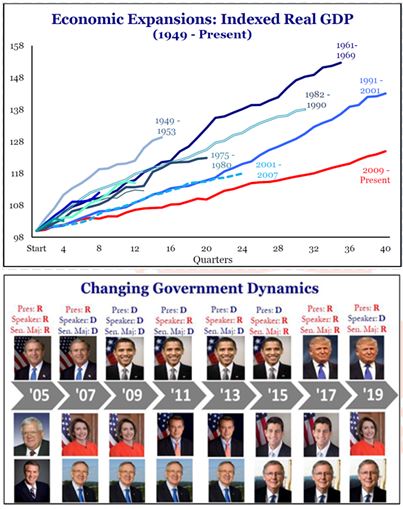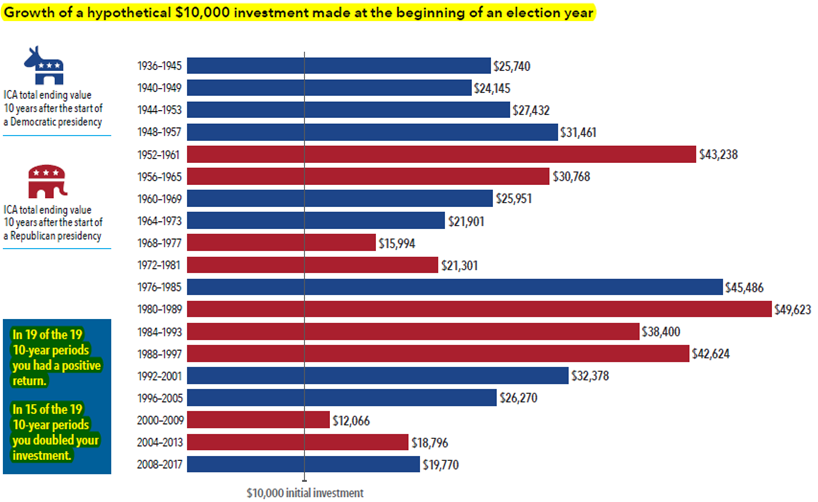We continue our theme relating to seeing clearly with 2020 vision. January started the new year and new decade with positive action – new stock market highs on the first trading day of 2020 and 5 additional dates from there with the most recent occurring on January 17th. Since then, the market caught the flu. Volatility jumped toward the end of the month, as China “exported” fears of a contagious and not well understood Coronavirus. The S&P500 Index forfeited away 3% gains to close marginally negative at month end. Stocks, both domestic and foreign, showed “flu-like” symptoms, while bonds offered a “safe haven” with yields falling (prices rising). Client portfolios with more bonds performed better than those with greater stock market exposure during January.
The Coronavirus provided a timely reason for investors to flee from risk-on stock investing. Following an exceptional 2019 stock market performance, it seems that any troubling event with perceived merit provided a good excuse to sell. Not knowing much about the virus and/or how quickly it can travel the globe created sufficient worry that it will alter and slow global economic growth. Just as Phase 1 of tariff negotiations and Brexit were concluded – which was expected to provide economic encouragement to some degree – the exporting of this global virus makes economic gravity seem likely. There is always something for the markets to worry about, and to which investors seem to overreact. In the past, some tumultuous events included: labor market struggles, weather related calamities, businesses going bankrupt, civil unrest & protests, and overseas conflicts & wars. Any of these alone or in combination, can create market declines, and sometimes create economic recessions. They are certain to create short-term market volatility. President Franklin D. Roosevelt stated, “The only limit to our realization of tomorrow will be our doubts of today.” Seeing clearly in 2020 means we (investors) need to navigate the ups/downs of what could be a crazy presidential election year.
 January 2020 reached the 128th consecutive month since the last recession; setting new marks each month as the longest US economic expansion in post-WWII era, including looking back to records maintained since 1854. That’s good news! Yet, the current 10+ year recovery is the slowest on record (chart labeled ‘Economic Expansions’). The political implications are significant as continuous 2% GDP growth is not producing enough income progress for many American workers. Economic sluggishness translates into political volatility. In fact, US voters removed the political party in power in 6 of the past 7 elections since 2008 (see ‘Changing Gov’t Dynamics’ chart). This is the most political change in 100 years, but similar to the same changing political experience in the 1930s. When economic growth is sub-par, below its historical 3% per year average rate, the voting public gets restless (not just in the US but it’s also an underlying factor in the foreign political landscape). Populists and “outsiders” gain ground not only in the US but also in Europe. To set this commentary straight (2020 vision); we are not offering comments about one administration or another being better, or one party or another. We are only sharing economic growth observations against the backdrop of the political composition in government. As we start February, the Iowa caucus and several other state primaries kickoff the 2020 Presidential election year.
January 2020 reached the 128th consecutive month since the last recession; setting new marks each month as the longest US economic expansion in post-WWII era, including looking back to records maintained since 1854. That’s good news! Yet, the current 10+ year recovery is the slowest on record (chart labeled ‘Economic Expansions’). The political implications are significant as continuous 2% GDP growth is not producing enough income progress for many American workers. Economic sluggishness translates into political volatility. In fact, US voters removed the political party in power in 6 of the past 7 elections since 2008 (see ‘Changing Gov’t Dynamics’ chart). This is the most political change in 100 years, but similar to the same changing political experience in the 1930s. When economic growth is sub-par, below its historical 3% per year average rate, the voting public gets restless (not just in the US but it’s also an underlying factor in the foreign political landscape). Populists and “outsiders” gain ground not only in the US but also in Europe. To set this commentary straight (2020 vision); we are not offering comments about one administration or another being better, or one party or another. We are only sharing economic growth observations against the backdrop of the political composition in government. As we start February, the Iowa caucus and several other state primaries kickoff the 2020 Presidential election year.
A belief about which political party is best for the markets often discourages half the population from investing. Yet as history reveals, whether a Republican or a Democrat claims victory is not a deciding factor in how an investment in the stock market made at the beginning of an election year looked 10 years in the future. Do you want to experience high odds of success with investing in a presidential election year? If so, rely on time rather than timing. In 19 of the 19 ten-year periods (meaning every 4 years since Roosevelt’s election in 1936), an investor earned a positive return; 15 of those 19 ten-year periods earned a double: an original $10,000 investment grew to more than $20,000. There was no single 10-year interval where one experienced a loss from their original investment. 2000-2009 generated the smallest 10-year gain, wherein $10,000 became $12,066. The largest gain was 1980 to 1989 with $10,000 growing to $49,623. Whether your preference is for Red or Blue, it doesn’t matter (both experienced low and high 10-year accumulations). The key is being invested, as investors (and fund managers) adjust stock portfolio structure to benefit from the political dynamics of one political agenda or another.

The key message: investment success during any 10-year interval is more dependent on the strength and resilience of the American economy than on which candidate or party holds office. Yes, traveling through the noise of an election year can be uncertain. We can probably expect the 2020 US presidential election year will appear more noisy than ever. This may provide market volatility that is unsettling. It is also reasonable to believe the Fed will be on hold (stay “quiet”) in 2020, as it prizes its independent status above most else. If history is any guide relating to Fed policy, the average length of time between the first Fed easing (rate cut) and its next tightening (rate increase) is about 18 months, suggesting the next hike could be speculated on the calendar to occur around February 2021. Yet, the US economic backdrop appears likely to continue its slow-growth experience in 2020, which should thereby provide support for the current Bull market advance to continue.
Do you desire good investment success? Consider worrying less about the 2020 election and its related noisy distractions. Worry less about “Red” or “Blue”, but more about you. Elections come and go. Results last for a lifetime. For “you”, please be concerned about remaining invested long-term. Even consider that the current virus scare provides selective investment opportunities from a short-term loss of confidence. Prior health-scare episodes created volatility short-term, but resolved themselves higher as containment occurred. Always remember, the history of the financial markets shows “that stocks beat bonds often, and by a lot.” “And, if time is on your side, you should own more stocks than bonds.”
Author: Bill Henderly, CFA – February 7, 2020
Printer-Friendly PDF can be downloaded here: “Red, Blue & You” – February Commentary
Informational & Chart Sources:
- Capital Group (home of American Funds), “A review of US presidential elections”; July 2019
- Strategas Research Partners, Policy Outlook, July 2019; and other economic research comments received in January/February 2020, via research subscription.